6 Advantages of Stainless Steel Furniture: Discover the Benefits That Transform Spaces!
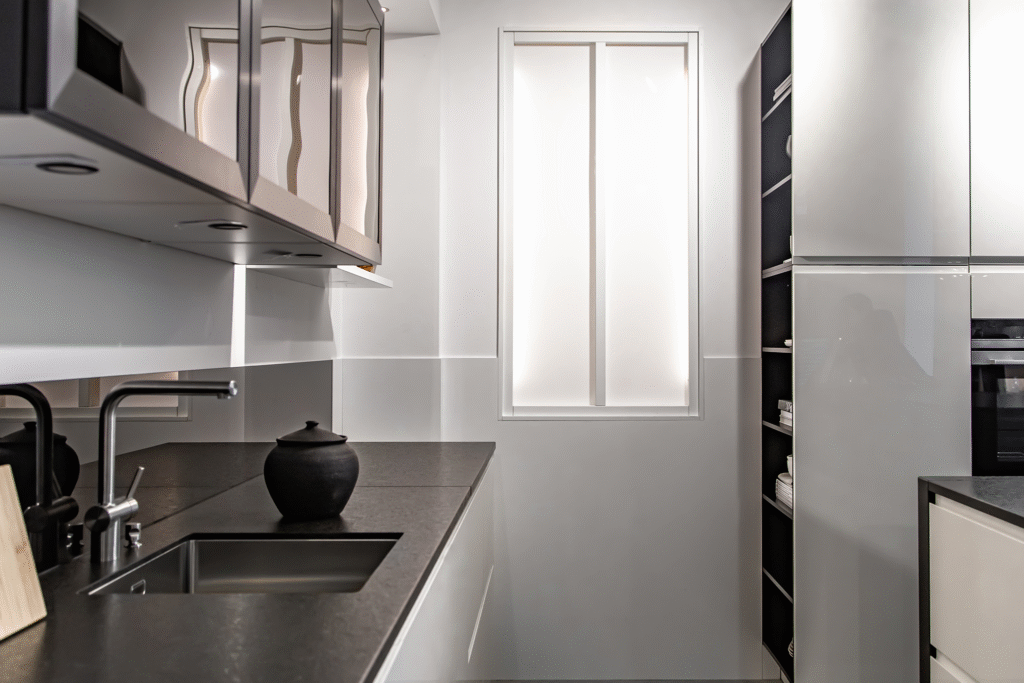
When it comes to equipping industrial kitchens, hospitals, laboratories, or veterinary clinics, stainless steel furniture stands out as the safest and most efficient option. Far from being just aesthetics, stainless steel brings benefits that transform any space into a more hygienic, durable, and functional environment. Hygiene and resistance: the foundation of choosing stainless steel The main reason to opt for stainless steel furniture is hygiene. Its smooth, non-porous surface prevents the spread of bacteria, fungi, and viruses. In addition, stainless steel does not absorb liquids or odors, which makes cleaning easier and ensures sanitized environments at all times. Thus, kitchens and hospitals can easily meet health surveillance standards. Resistance also deserves attention. Stainless steel withstands impacts, high temperatures, and heavy use without warping or cracking. As a result, furniture made from this material lasts much longer and reduces the need for replacements. Therefore, the initial investment becomes more economical over the years. Low maintenance and professional aesthetics Cleaning stainless steel is practical. so use neutral detergent and a soft cloth to restore the material’s shine. Unlike other finishes, it does not require constant polishing or special products, which saves time and reduces costs. In fact, this ease allows furniture to remain ready for intensive use at all times. Stainless steel also adds aesthetic value. Its modern finish conveys organization and professionalism, reinforcing the image of quality in any kitchen, laboratory, or clinic. Consequently, clients, inspectors, and staff perceive the environment as safe and reliable. Versatility and sustainability for the future Another advantage is flexibility. Stainless steel can be shaped into countertops, tables, carts, and shelves that make the most of every available space. This way, the environment becomes more efficient and adapted to the team’s routine. In addition, versatility allows for custom projects for different areas. Sustainability is another point that cannot be ignored. Stainless steel is 100% recyclable and retains its properties even after reuse. Above all, since it has a long service life, it generates less waste and contributes to more responsible consumption practices. Choosing stainless steel furniture means combining hygiene, resistance, practicality, and professional design in one decision. However, the greatest advantage is that this choice adds value in the present and prepares spaces for the future.
Why Use Stainless Steel Equipment for Industrial Kitchens?
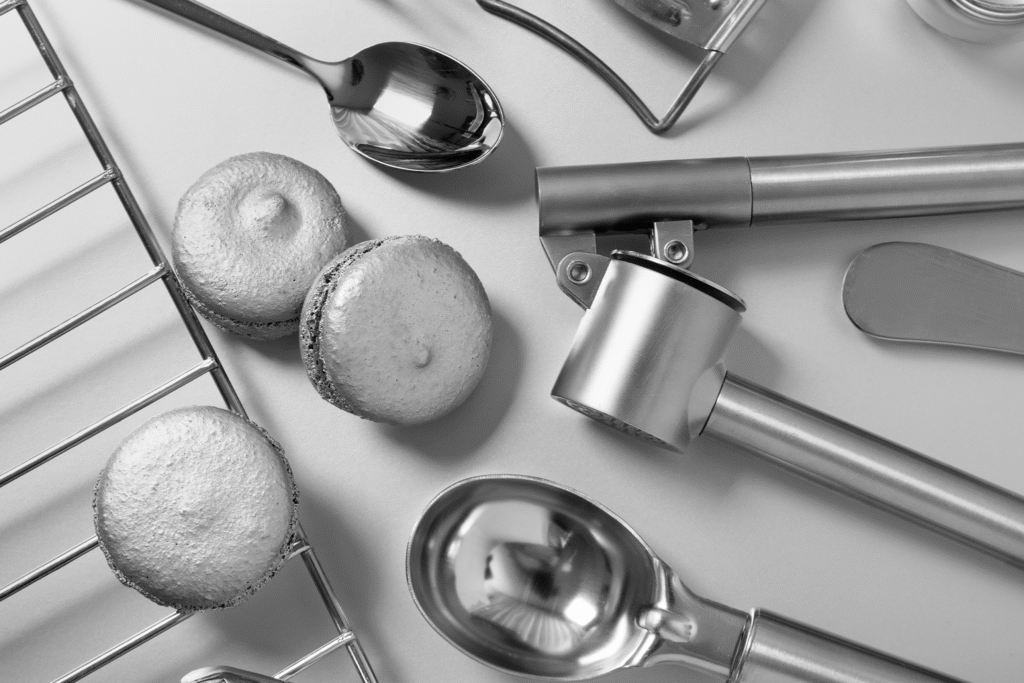
In the fast-paced environment of an industrial kitchen, every detail makes a difference. Choosing equipment and furniture is not just about aesthetics: it is a strategic decision. Stainless steel has become the foundation of professional kitchens because it combines impeccable hygiene, extreme durability, and operational efficiency. If the goal is to have an environment that withstands time and the strictest inspections, stainless steel is the definitive answer. Hygiene, safety, and resistance: the essential trio of stainless steel The main advantage of stainless steel in industrial kitchens is food safety. Its smooth, non-porous surface prevents the proliferation of bacteria and microorganisms, unlike materials such as wood or common plastics. In addition, stainless steel does not absorb liquids or odors, drastically reducing the risks of cross-contamination. Another advantage is ease of cleaning. Stainless steel equipment withstands the strongest chemicals used in frequent disinfections to meet sanitary regulations. An industrial kitchen countertop or a stainless steel sink can be sanitized in minutes, keeping the environment always ready for food preparation. This resistance is also reflected in durability. Stainless steel does not rust in humid or acidic environments and withstands impacts, high temperatures, and intensive use without deforming. That is why equipment such as hoods, industrial tables, and stainless steel shelves have a long lifespan, reducing maintenance and replacement costs. Operational efficiency and professional aesthetics Beyond resistance, stainless steel improves workflow. Ergonomic countertops, sinks with multiple bowls, and robust transport carts are designed to make the team’s routine easier. The use of furniture with casters, for example, speeds up equipment movement and reduces physical effort in repetitive operations. And the aesthetic factor cannot be ignored. The modern and clean appearance of stainless steel conveys organization and professionalism, reinforcing the image of quality in your kitchen to clients, inspectors, and partners. In summary, investing in stainless steel equipment for your industrial kitchen is not just a material choice, but a smart decision. Stainless steel ensures a safe, hygienic, durable, and efficient workspace — an indispensable pillar for the success of any food service business.
“Smart” Faucets and Conscious Water Consumption

The Sica Inox Electronic Faucet combines real water savings with contactless hygiene. The sensor releases the flow only when necessary and stops it within seconds. This way, you reduce waste and keep your routine safer — even in high-traffic areas, clinics, laboratories, and professional kitchens. Real water savings without effort With the sensor, water flows only during rinsing. Then, the flow stops automatically. Therefore, consumption can drop by up to 70%. In addition, you avoid someone forgetting the faucet open. The result is predictable: lower costs and more efficient operation. Discover the options in our stainless steel faucet line and, for critical areas, the hospital faucets. Contactless hygiene for critical areas Without touch, there is less risk of cross-contamination. This is essential for asepsis routines. Therefore, it is worth integrating the electronic faucet into specific solutions such as automatic faucet sinks, wall sinks, and asepsis sinks. This way, the process becomes standardized and safe. Where the technology is already integrated The Sica Inox Electronic Faucet equips, or can equip, several items in our portfolio. Among them: Hand Wash Sink, Sink 500–1, Sink 1500–2, Sink 2000–3, Individual Sink with Automatic Faucet, and the Triple Faucet. To compare models, access Sink and discover the automated sets that make daily life easier. To complete the project, consider hospital accessories and hospital worktops. This way, the workflow gains rhythm, and cleaning becomes simpler. Conscious consumption in daily life Although most of the planet is covered by water, only a small fraction is drinkable. In addition, reserves suffer from scarcity and contamination. The good news is that you don’t need to give up comfort to take care of this resource. Install sensor faucets in high-traffic areas, adjust cleaning routines to avoid waste, and, when possible, reuse water for non-potable uses. For clinical environments, combine the electronic faucet with the nursing and hospital expurgo lines. This way, materials and surfaces remain within required protocols. Next steps If the goal is to reduce waste, increase hygiene, and align your space with responsible practices, the Sica Inox Electronic Faucet is the right choice. Explore the available configurations, integrate with our sinks, and define the ideal set for your reality — from public service to asepsis areas, with efficiency and safety first.
Stainless Steel Wet Channel: Functionality and Design for Modern Kitchens
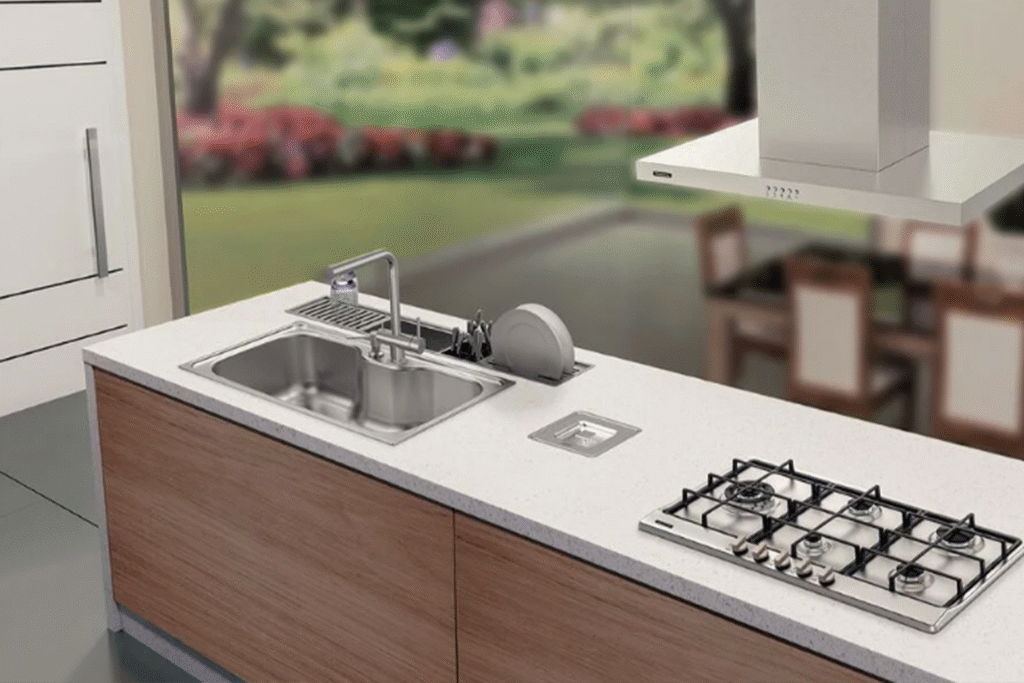
Used to support glasses, cutlery, and dishes after washing, sanitizing, and rinsing, the channel keeps these utensils always at hand. The Sica Wet Channel is designed to be complete according to your needs: • Plate Holder• Cutlery Holder• Cup Holder• Box for Fruits and Vegetables The kitchen is the “heart” of the house, so it needs a functional, modern utensil with features idealized by you, since the removable compartments allow you to choose the utensils according to your need. The stainless steel wet channel is a durable solution that combines design and functionality to optimize the countertop space. This equipment offers safe and hygienic support for dishes, glasses, and cutlery right after washing, keeping utensils organized and ready for use. Its stainless steel construction ensures maximum durability and resistance to corrosion, in addition to making cleaning easier. SPECIAL TIP FROM AN EXPERT “If you install a wet channel (or gourmet channel) in stainless steel by the sink, remember that you will need another drain point, besides the sink, or a branch to drain the moisture.If you are short, placing it at the back of the sink may make access difficult; in this case, choose to place the wet channel laterally to the bowl.There are accessories you can buy to compose your wet channel such as cutlery holders, dish racks, cup racks, sponge holders with lids (great because they hide them), among others.The channel comes in different lengths, the choice depends on the space and the accessories you want to have.” (Márcia Bruno, www.almanaquedamulher.com)
Pass Through Stainless Steel Clean Room: What you need to know.
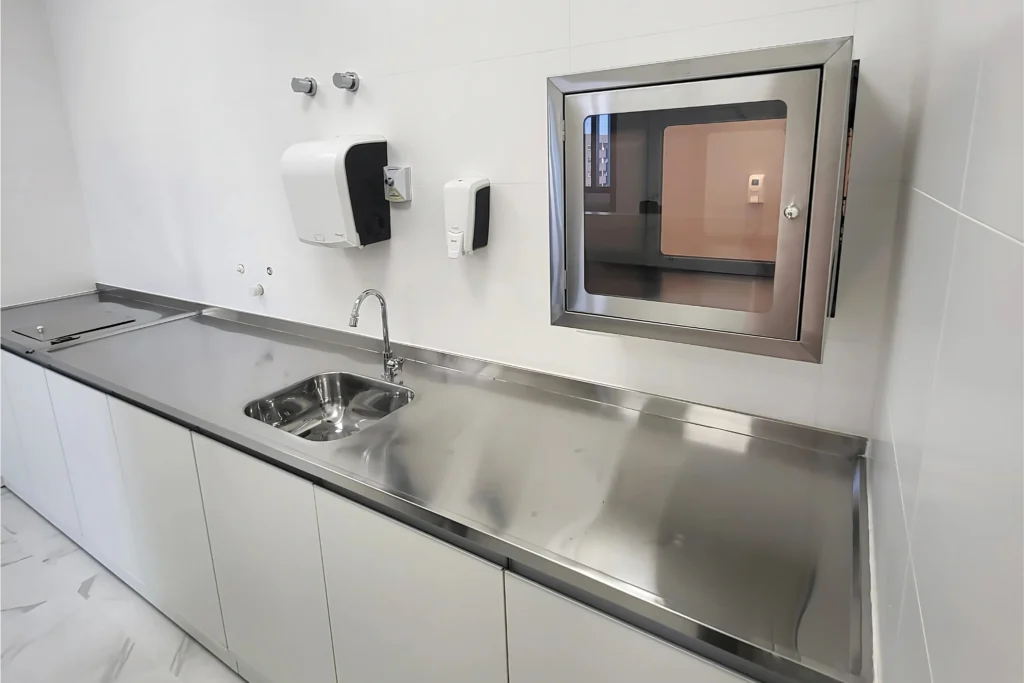
Pass Through for clean rooms what is it? A stainless steel pass through for clean rooms , also known as a pass box, clean room window or pass through hatch, is an essential piece of equipment in controlled environments. But its main function is to allow the transfer of materials between clean and sterile areas, ensuring that the process is carried out safely and without risk of cross-contamination.This type of equipment is widely used in hospitals, laboratories, pharmaceutical, food and cosmetics industries, because it always aims to preserve the integrity of the environment and meet the requirements of regulatory bodies such as the Health Surveillance Agency. As such, the use of pass through is mandatory in some clean rooms. Where can cleanroom pass-throughs be used? What are the benefits of the Stainless Steel Pass Through? Installing a stainless steel pass-through has several advantages: Features and options available At Sica Inox, the Pass Through models can count on different features, so check them out below:
Washbasins for Hand Asepsis: Standards and Essential Hygiene.

In any environment where hygiene is a fundamental pillar – such as hospitals, clinics, laboratories, industrial kitchens and even commercial establishments – the presence of hand-washing sinks is not just a convenience, but a crucial sanitary requirement. This equipment plays a vital role in preventing and controlling infections, thus protecting both professionals and users. Understanding the regulations governing their installation and characteristics is therefore essential to ensuring safety and compliance. Why does hand asepsis require specific sinks? Hand asepsis, whether simple sanitization with soap and water or surgical antisepsis, is the most effective measure for reducing the transmission of microorganisms. For this practice to be effective, washbasins specifically designed for this purpose are indispensable. Ordinary sinks may not meet the requirements for splash control, suitable materials or the functionality needed for a thorough and safe wash. Furthermore, in healthcare environments, the proximity and design of the washbasin directly influences the adherence of professionals to hand hygiene practices. The lack of an appropriate washbasin or its poor location can compromise safety. Consequently, the risk of cross-contamination and healthcare-related infections (HAIs) increases. Therefore, the correct choice is fundamental. Sanitary Standards for Washbasins: What You Need to Know Health standards, often dictated by bodies such as ANVISA (the National Health Surveillance Agency) in Brazil, are quite clear about the requirements for washbasins for hand asepsis, especially in health services. Below, we detail the key points: Suitable material and easy sanitization The most suitable and, in many cases, required material is stainless steel. This is because its surface is smooth and non-porous. This prevents the adhesion and proliferation of microorganisms. In addition, stainless steel is extremely easy to clean and disinfect, and resists corrosion by water and chemical cleaning and antiseptic products. As a result, it retains its hygienic properties for much longer. Non-Contact Manual Actuation: Preventing Recontamination To avoid recontamination of hands after washing, taps should be operated without manual contact. Models with: This ensures that, after washing, hands remain really clean.
Ideal Kitchen Vat Size: Complete Guide to Your Choice
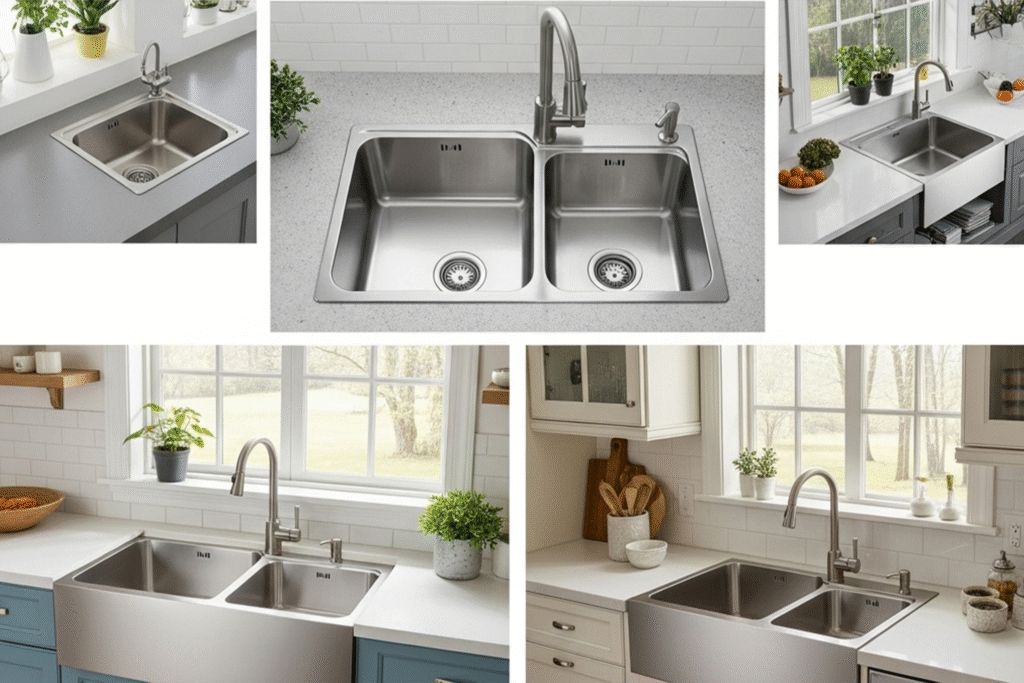
The kitchen sink is much more than just a hole in the worktop; it is, in fact, one of the most active and important points in any kitchen. Whether in a residential or commercial environment or a robust industrial kitchen, finding the right size kitchen sink is crucial. This strategic decision has a direct impact on functionality, practicality and the optimization of available space. A well-sized sink can, for example, transform your routine, making it easier to wash large pots and pans and organize your dishes. But how do you know which is the perfect size for your needs? Ideal Kitchen Sink Size: Use and Volume of Demand (Residential vs. Industrial) The first and most crucial step in determining the ideal kitchen sink size is undoubtedly to understand the intensity and type of use it will have. Choosing the Ideal Sink Size: Countertop and Cabinet Space Before defining the ideal bowl size, it is imperative to accurately measure the space available on your worktop and in the lower cabinet. The Material Makes the Difference: Why Stainless Steel is the Right Choice for Your Sink Regardless of the ideal kitchen sink size, the sink material is crucial. In this sense, stainless steel is undoubtedly the best option for any type of kitchen. Vat Models and Additional Features to Optimize Your Choice In addition to the ideal kitchen sink size and material, also consider the type of installation. There are built-in sinks (for a cleaner look), overlay sinks (for practical installation), or semi-recessed sinks. Additional features can also add a lot of value. Drain valves, wire baskets for draining dishes, built-in waste garbage cans or integrated soap dispensers can add layers of functionality and practicality. They optimize the use of space and make the kitchen routine more efficient and enjoyable. For even more customized solutions, explore our custom stainless steel projects from SICAINOX. See more – 6 Advantages of Stainless Steel Furniture: Discover the Benefits that Transform Environments!
Surgical Steel and Stainless Steel: Unraveling the Essential Difference

Many people use the terms “surgical steel” and “stainless steel” interchangeably. However, although related, they are not the same thing. Understanding this distinction is crucial. After all, applications where hygiene, durability and biocompatibility are non-negotiable, such as in healthcare environments or the food industry, depend on this clarity. In this article, we’ll unravel the real difference between surgical steel and stainless steel, clarifying myths and facts. Stainless Steel: The Basis for Resistance and Versatility Stainless steel (or simply stainless steel) is actually a vast family of metal alloys. Its main characteristic is its remarkable resistance to corrosion. The presence of at least 10.5% chromium in its composition confers this property. When chromium is exposed to oxygen, it forms a thin, invisible passive layer on the surface of the metal. This layer acts as a protective barrier against oxidation (rust) and other corrosive agents. There are several variations of stainless steel (such as the 304, 430 and 316 series). Each one has slightly different compositions and properties. Consequently, they are suitable for a variety of uses: from domestic utensils and kitchen sinks to heavy industrial equipment and building facades. Its ease of cleaning, durability and modern aesthetics make it an extremely versatile material. It is therefore widely used in numerous sectors. To find out more about the general specifications of stainless steel, you can consult the Brazilian Stainless Steel Association (Abinox). Surgical Steel: Stainless Steel Elevated to the Medical Level The term surgical steel refers to a specific type of stainless steel. Manufacturers design and process it to meet the very high standards demanded by the medical, dental and implant industries. AISI 316L stainless steel is the best known and most widely used. The letter “L” stands for “Low Carbon”, a crucial characteristic for this application. The main difference between surgical steel and other types of stainless steel lies in its chemical composition and processing: The Essential Relationship: All Surgical Steel Is Stainless, but Not All Stainless Is Surgical The main conclusion is clear: all surgical steel is a type of stainless steel. However, not all stainless steel has the characteristics and purity necessary to classify it as “surgical”. Surgical steel is therefore a specialized version of stainless steel, optimized for the extreme demands of the medical environment. Patient safety and the integrity of the material are non-negotiable. In short, while ordinary stainless steel is excellent for many everyday and industrial applications, surgical steel is the mandatory choice for surgical instruments, orthopaedic and dental implants. It is also essential for other devices that require maximum performance in biological environments. See more: Why use stainless steel equipment for industrial kitchens?

